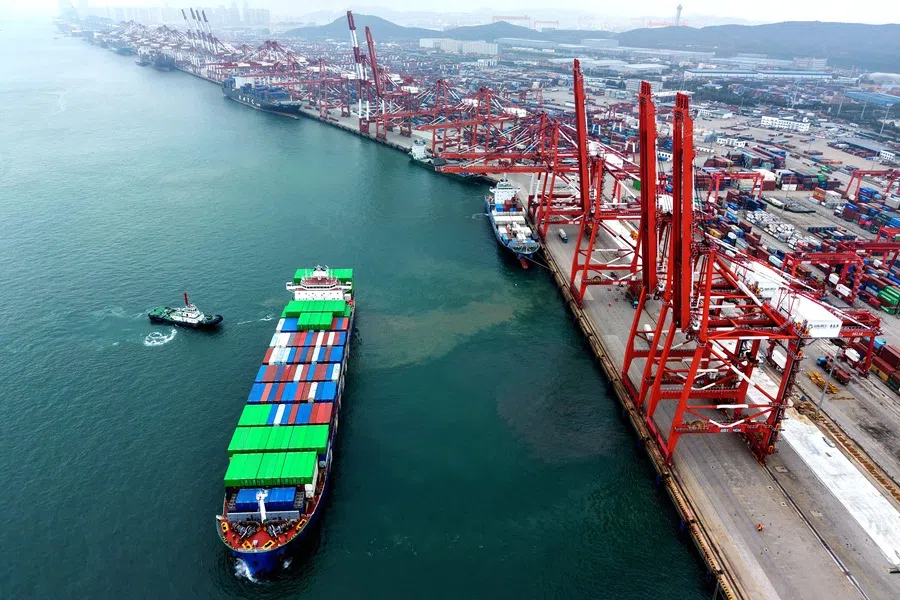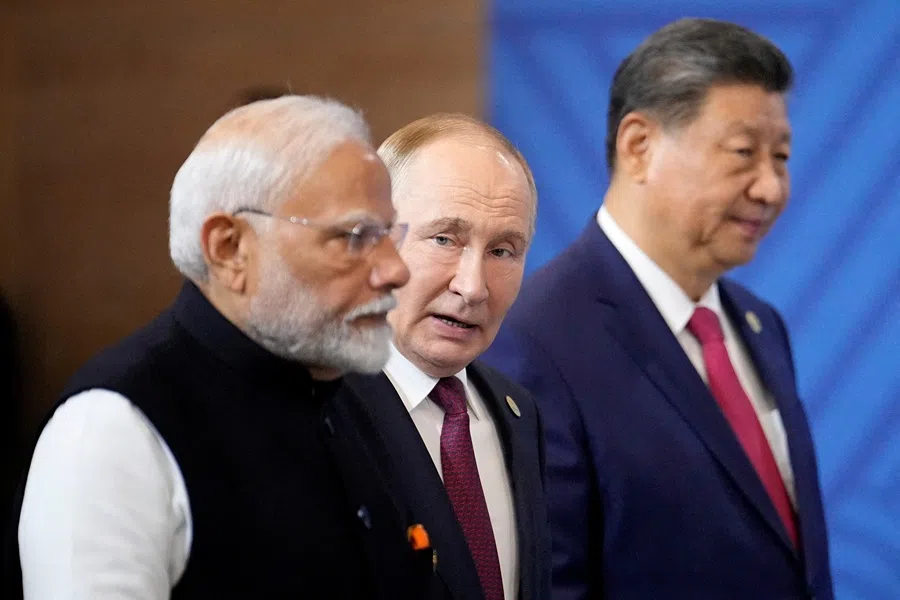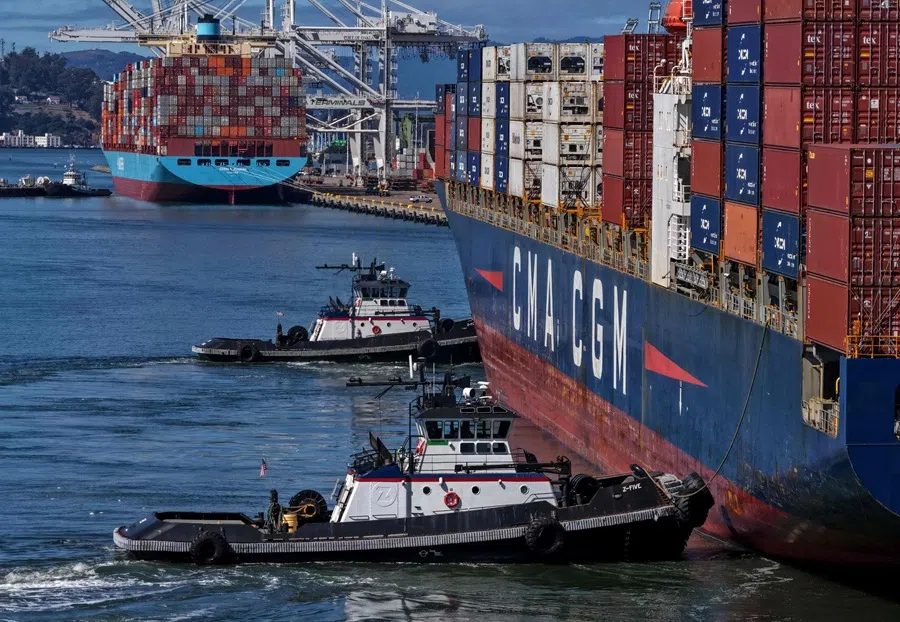风萧萧_Frank
以文会友全新博弈:中国重写对美战略
2025年10月13日
https://www.thinkchina.sg/politics/whole-new-game-china-rewrites-its-strategy-towards-us
顾庆阳,李光耀公共政策学院副教授
中国意识到,美国对华遏制并非暂时的政治姿态,而是华盛顿外交战略的持续特征,因此自美国总统唐纳德·特朗普第一任期以来,中国就已做好准备。顾庆阳学者指出,受外部环境变化和国内经济复苏需求的驱动,中国正在重塑交战规则。
这组照片拍摄于2025年4月4日,从左至右依次为美国总统唐纳德·特朗普(2025年4月3日)在佛罗里达州迈阿密,以及中国国家主席习近平(2025年3月5日)在北京。
Mandel Ngan 和 Pedro Pardo/法新社)这组照片拍摄于2025年4月4日,从左至右依次为美国总统唐纳德·特朗普(2025年4月3日)在佛罗里达州迈阿密,以及中国国家主席习近平(2025年3月5日)在北京。(Mandel Ngan 和 Pedro Pardo/法新社)
十月的第一周,世界两大强国呈现出截然不同的景象。在中国,国庆假期迎来了充满节日气氛和自信的氛围;而在太平洋彼岸,美国则因党派僵局导致的联邦政府关门而陷入瘫痪。
这是两个超级大国首次在同一时刻有效“暂停”——一个是出于选择,另一个是出于失灵。然而,这种巧合背后隐藏着更深层的含义:中美战略竞争已进入新阶段。中国对美的姿态正从谨慎防御转向攻守兼备。
针锋相对的贸易威胁
过去几个月,双方高级经济和金融官员在欧洲举行了四轮会谈。会谈被描述为建设性的,两国政府都释放了善意和缓和的信号。许多观察人士认为这是一个充满希望的信号,表明双边关系正在趋于稳定,尤其是在首尔亚太经合组织领导人峰会召开之际。
美国总统唐纳德·特朗普和中国国家主席习近平预计将出席此次峰会。特朗普多次表达与习近平会晤的愿望,甚至暗示可能达成一项“重大协议”,这加剧了全球对中美关系取得突破的预期。
然而,随着中国“黄金周”假期结束,乐观情绪迅速消退。北京宣布了一系列针对美国的新反制措施。商务部将几家参与对台军售的外国公司列入“不可靠实体清单”。稀土元素和其他关键原材料的出口受到管制。交通运输部门公布了对运往美国的货物和美国船只征收的新运费。这些举措标志着北京罕见地展现了战略自信,并揭示了中美竞争性质的变化。
这种急剧升级引发了分析人士的质疑:中国为何选择此时此刻以如此强硬的方式作出回应?
2025年10月11日,一艘船停靠在中国东部山东省青岛港的集装箱码头。(法新社)
华盛顿立即做出了回应。特朗普总统威胁取消与习近平的会晤,并宣布将于下个月对中国进口产品加征100%的关税。这一声明在全球市场引发震荡,再次暴露出全球经济信心在地缘政治竞争面前的脆弱性。
此次贸易战的急剧升级引发了分析人士的质疑:中国为何选择此时做出如此强硬的回应?要理解北京行动背后的逻辑,有必要回顾过去七年中美贸易冲突的演变。
中国的战略准备
2018年特朗普政府首次发动贸易战时,中国的反应迅速,但主要采取防御性措施,力求控制损失并避免升级。但2025年的形势截然不同。今年早些时候重返白宫后,特朗普再次启动了更广泛、更激进的关税措施,不仅针对中国,还针对其他主要经济体。然而,这一次,北京的准备要充分得多。
即使在乔·拜登担任总统期间相对平静的岁月里,中国政策制定者也从未放松对两国长期结构性紧张局势的评估。他们得出结论,美国对华遏制已演变成一项两党合作且制度化的政策——这是华盛顿外交战略的一个持续特征,而非暂时的政治姿态。
这些准备从根本上改变了中国在当前对抗中的地位。
北京现在比过去十年拥有更大的主动权和更大的回旋余地。
为了应对这场持久的竞争,中国进行了三大战略准备。首先,利用谈判推迟实施新??的关税,为国内经济复苏和产业升级争取宝贵时间。其次,加快半导体、人工智能和可再生能源等战略领域的技术自给自足,逐步减少对美国技术的依赖。第三,巩固稀土和光伏等全球供应链关键行业的主导地位,从而增强自身影响力,并构建能够遏制美国压力的应对措施。
美国财政部长斯科特·贝森特、美国贸易代表杰米森·格里尔、中国国际贸易谈判代表兼商务部副部长李成钢以及中国国务院副总理何立峰,准备在2025年5月10日于瑞士日内瓦举行的中美双边会晤当天进行讨论。
美国财政部长斯科特·贝森特、美国贸易代表杰米森·格里尔、中国国际贸易谈判代表兼商务部副部长李成钢以及中国国务院副总理何立峰,准备在2025年5月10日于瑞士日内瓦举行的中美双边会晤当天进行讨论。
这些准备工作从根本上改变了中国在当前对抗中的立场。与过去十年相比,北京现在拥有更大的主动权和更大的回旋余地。
中国最新的战略调整反映了其世界观的重大转变。在过去二十年的大部分时间里,中国寻求维持稳定,避免直接对抗,倾向于通过耐心和克制赢得战略空间。但在经历了多年的技术封锁、金融限制和地缘政治包围之后,中国领导人逐渐认识到,单纯的妥协既无法赢得尊重,也无法确保国家安全。在长期的大国竞争中,只有攻守兼备的战略才能保持主动性和可信度。
外部环境的变化
这种重新调整有几个潜在因素。
首先,国际力量对比正在微妙而稳步地发生变化。自疫情爆发以来,中国在产业复苏和技术创新方面展现出非凡的韧性,而美国则在日益加深的政治极化、不断攀升的债务和社会分裂中苦苦挣扎。北京认为一个有利于自身的“机遇之窗”正在出现。
其次,日益不利的地缘政治环境迫使中国必须更早、更果断地采取行动。日本领导层对台湾采取了更强硬的立场;一些欧洲国家已加入美国行列,限制对华技术转让;地区安全氛围也变得更加不确定。在这种情况下,持续的被动只会加剧中国的脆弱性。
第三,北京的国际支持基础不断扩大。以金砖国家和其他新兴经济体为首的全球南方国家的崛起,为中国提供了更广阔的外交空间和道义支持。许多发展中国家理解甚至支持中国的立场,为北京与华盛顿的对抗提供了外部缓冲。
从北京的角度来看,当前形势代表着一个“为和平而战”的机会——通过坚定的行动表明,美国持续施压的代价将超过相互妥协的代价。
2024年10月23日,印度总理纳伦德拉·莫迪、俄罗斯总统弗拉基米尔·普京和中国国家主席习近平在俄罗斯喀山金砖国家峰会全体会议前合影留念。
2024年10月23日,印度总理纳伦德拉·莫迪、俄罗斯总统弗拉基米尔·普京和中国国家主席习近平在俄罗斯喀山金砖国家峰会全体会议前合影留念。
与此同时,美国的政治两极分化和经济不确定性正在削弱其战略一致性。随着中期选举的临近,华盛顿的政策辩论越来越被国内竞争和短期考量所主导。这种内部干扰降低了美国威慑的有效性,为中国主动出击创造了机会。
因此,我们有理由认为,在中国民众享受国庆假期之际,国家高层决策者正忙于敲定新的对美战略。从北京的角度来看,当前时刻代表着一个“争取和平”的机会——通过坚定的行动表明,美国持续施压的代价将超过
需要相互妥协。
重塑交战规则
这种“以冲突恢复平衡”的战略并非升级对抗,而是重塑交战规则。中国的核心目标是重建中美互动中的均势,维护国家安全和科技主权,并为长期经济发展创造更稳定的环境。因此,中国近期的行动不应被视为情绪化的报复,而应被视为精心策划、有纪律的战略反攻。
中国对美政策已超越谨慎防御,进入攻守兼备、以实力求和平的新阶段。
2025年10月10日,加利福尼亚州奥克兰,一艘集装箱船抵达奥克兰港,拖船在空中为其提供协助。
因此,中国对美战略逻辑发生了深刻的转变。过去,中国通过克制积累实力;如今,中国则通过克制的自信寻求平衡。从被动适应到主动塑造的转变,标志着双边关系发展进入了一个新阶段。
中国并非寻求全面对抗,而是寻求力量的重新校准,迫使华盛顿重返谈判桌——在新的力量平衡下重新定义“游戏规则”。这意味着,未来的中美竞争将不再是简单的支配与服从的等级制,而是一场更为复杂的、围绕主动权、影响力和合法性的较量。
中国不再仅仅应对外部压力,而是塑造自身的战略环境。从这个意义上讲,中国对美政策已超越谨慎防御,进入攻守兼备、力求以实力求和平的新阶段。
相关:特朗普的关税战旨在重塑全球秩序,但中国已做好准备 | 中美关税战的未来
A whole new game: China rewrites its strategy towards the US
13 OCT 2025
https://www.thinkchina.sg/politics/whole-new-game-china-rewrites-its-strategy-towards-us
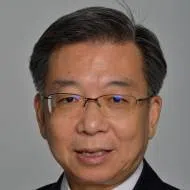
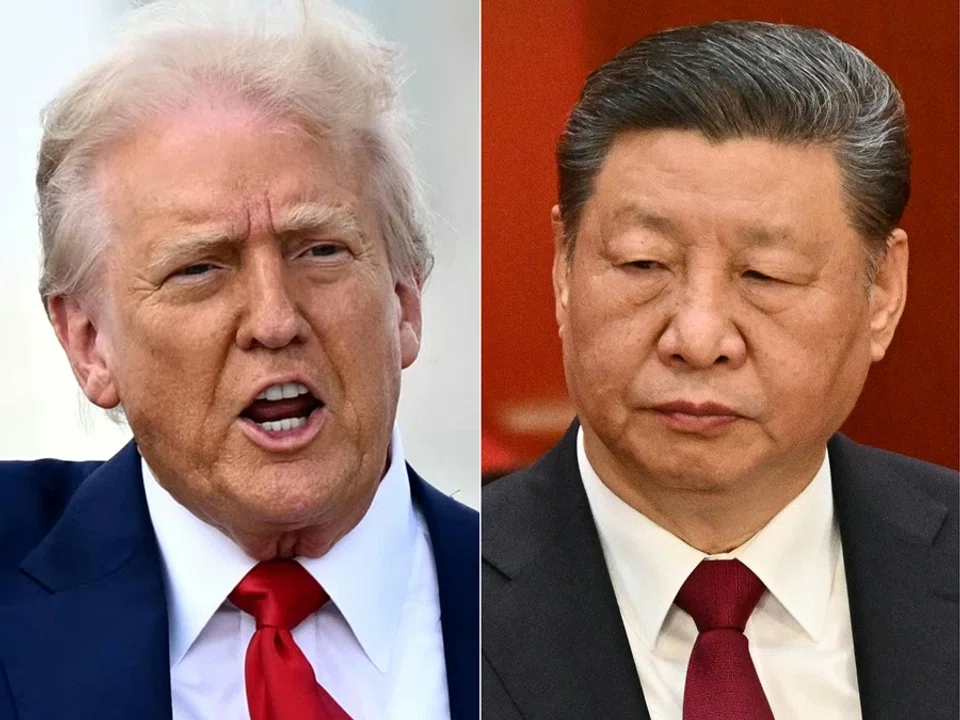 This combination of pictures created on 4 April 2025 shows, L-R, US President Donald Trump in Miami, Florida, on 3 April 2025 and China's President Xi Jinping in Beijing on 5 March 2025. (Mandel Ngan and Pedro Pardo/AFP)
This combination of pictures created on 4 April 2025 shows, L-R, US President Donald Trump in Miami, Florida, on 3 April 2025 and China's President Xi Jinping in Beijing on 5 March 2025. (Mandel Ngan and Pedro Pardo/AFP)It was the first time that both superpowers effectively “paused” at the same moment — one by choice, the other by dysfunction. Yet beyond this coincidence lies a deeper meaning: the strategic rivalry between China and the US has entered a new phase. China’s posture towards the US is shifting from a cautious and defensive stance to one that combines both defence and offence.
Tit-for-tat trade threats
Over the past few months, senior economic and financial officials from both sides held four rounds of talks in Europe. The discussions were described as constructive, with both governments sending signals of goodwill and moderation. Many observers took this as a hopeful sign that bilateral relations were stabilising, especially ahead of the APEC Leaders’ Summit in Seoul, which both US President Donald Trump and Chinese President Xi Jinping were expected to attend. Trump repeatedly expressed his desire to meet Xi and even hinted at the possibility of a “grand deal”, fuelling global expectations of a breakthrough.
However, optimism quickly faded after China’s “Golden Week” holiday ended. Beijing announced a series of new countermeasures targeting the US. The Ministry of Commerce placed several foreign companies involved in arms sales to Taiwan on its “unreliable entities list”. Export controls were imposed on rare earth elements and other critical raw materials. The transportation authorities unveiled new shipping fees on US-bound cargo and US-owned vessels. These actions signalled a rare show of strategic assertiveness from Beijing and revealed the changing nature of US-China competition.
This dramatic escalation has led analysts to ask: why did China choose this moment to respond in such an assertive manner?
A ship is moved into position at the container terminal of the port in Qingdao, in China’s eastern Shandong province on 11 October 2025. (AFP)
Washington’s response was immediate. President Trump threatened to cancel his planned meeting with Xi and declared that an additional 100% tariff on Chinese imports would take effect next month. The announcement sent shockwaves through global markets, once again exposing the fragility of global economic confidence in the face of geopolitical rivalry.
This dramatic escalation has led analysts to ask: why did China choose this moment to respond in such an assertive manner? To understand the logic behind Beijing’s actions, it is necessary to look back at the evolution of the US-China trade conflict over the past seven years.
China’s strategic preparations
When the Trump administration first launched the trade war in 2018, China’s response was swift but largely defensive, seeking to contain the damage and avoid escalation. But the situation in 2025 is markedly different. After returning to the White House earlier this year, Trump reignited tariff measures on a broader and more aggressive scale, targeting not only China but other major economies. This time, however, Beijing was far better prepared.
Even during the relatively calmer years of Joe Biden’s presidency, Chinese policymakers never relaxed their assessment of the long-term structural tensions between the two countries. They concluded that US containment of China had evolved into a bipartisan and institutionalised policy — a persistent feature of Washington’s foreign strategy rather than a temporary political gesture.
These preparations have fundamentally changed China’s position in the current confrontation. Beijing now has greater initiative and a wider margin for manoeuvre than it had over the past decade.
In anticipation of this enduring rivalry, China undertook three major strategic preparations. First, it used negotiations to delay the implementation of new tariffs, buying valuable time for domestic economic recovery and industrial upgrading. Second, it accelerated technological self-sufficiency in strategic sectors such as semiconductors, artificial intelligence and renewable energy, gradually reducing dependence on US technologies. Third, it strengthened its leverage by consolidating dominance in industries critical to global supply chains, including rare earths and photovoltaics, thereby building countermeasures capable of deterring US pressure.
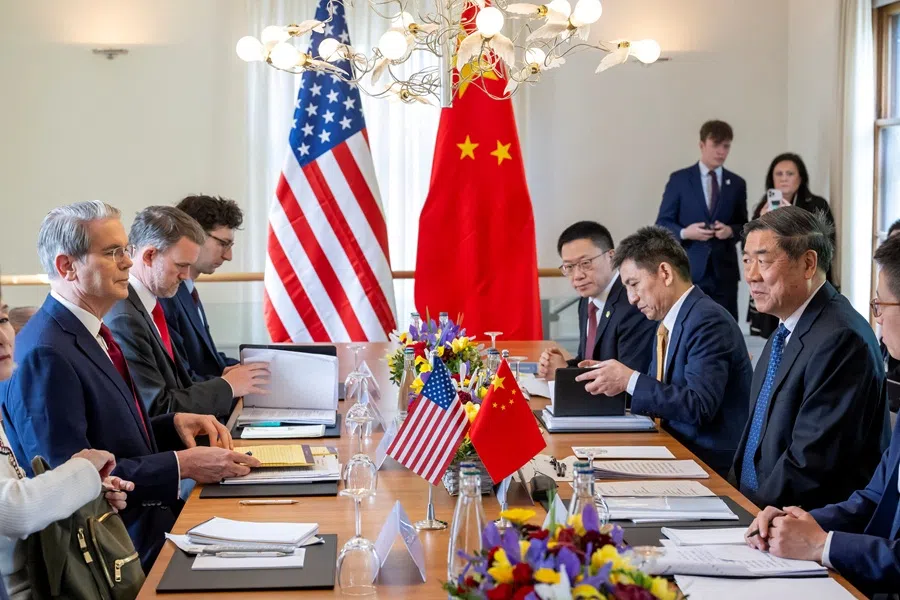
These preparations have fundamentally changed China’s position in the current confrontation. Beijing now has greater initiative and a wider margin for manoeuvre than it had over the past decade.
China’s latest strategic adjustment reflects a significant shift in its worldview. For much of the past two decades, China sought to maintain stability and avoid direct confrontation, preferring to win strategic space through patience and restraint. But after years of technology blockades, financial restrictions and geopolitical encirclement, Chinese leaders have become convinced that mere accommodation neither earns respect nor ensures national security. In a prolonged great-power competition, only a strategy that combines offence and defence can sustain initiative and credibility.
Shifts in external environment
Several underlying factors explain this recalibration.
First, the international balance of power is subtly but steadily shifting. Since the pandemic, China has demonstrated remarkable resilience in industrial recovery and technological innovation, while the US has struggled with deepening political polarisation, mounting debt and social fragmentation. Beijing sees a “window of opportunity” emerging in its favour.
Second, an increasingly adverse geopolitical environment has compelled China to act earlier and more decisively. Japan’s leadership has adopted a tougher stance on Taiwan; several European countries have joined the US in restricting technology transfers to China; and the regional security atmosphere has become more uncertain. In such circumstances, continued passivity would only amplify China’s vulnerabilities.
Third, Beijing’s international support base has expanded. The rise of the Global South — led by BRICS and other emerging economies — has given China broader diplomatic space and moral backing. Many developing countries view China’s position with understanding and even support, providing Beijing with an external buffer in its confrontation with Washington.
From Beijing’s perspective, the current moment represents an opportunity to “fight for peace” — to demonstrate through firm action that the cost of continued US pressure will exceed that of mutual compromise.
Indian Prime Minister Narendra Modi, Russian President Vladimir Putin and Chinese President Xi Jinping attend a family photo ceremony prior to the BRICS Summit plenary session in Kazan, Russia, 23 October 2024. (Alexander Zemlianichenko/Pool via Reuters)
At the same time, political polarisation and economic uncertainty in the US are weakening its strategic consistency. As the midterm elections approach, policy debates in Washington are increasingly dominated by domestic rivalries and short-term considerations. This internal distraction reduces the effectiveness of US deterrence, creating an opening for China to take the initiative.
It is therefore reasonable to assume that while China’s citizens enjoyed their National Day holiday, the country’s top decision-makers were busy finalising a new strategy towards the US. From Beijing’s perspective, the current moment represents an opportunity to “fight for peace” — to demonstrate through firm action that the cost of continued US pressure will exceed that of mutual compromise.
Reshaping the rules of engagement
This strategy of “using conflict to restore balance” is not about escalating confrontation, but about reshaping the rules of engagement. China’s core objectives are to re-establish parity in US-China interactions, to safeguard national security and technological sovereignty, and to secure a more stable environment for long-term economic development. China’s recent actions, therefore, should not be seen as emotional retaliation but as a calculated and disciplined strategic counteroffensive.
China’s approach to the US has moved beyond cautious defence into a new phase — one that integrates offence and defence, and seeks to achieve peace through strength.
In an aerial view, tugboats assist a container ship as it arrives at the Port of Oakland on 10 October 2025 in Oakland, California. (Justin Sullivan/Getty Images via AFP)
Hence, China’s strategic logic towards the US has undergone a profound transformation. In the past, China accumulated strength through restraint; today, it seeks equilibrium through controlled assertiveness. The transition from reactive adaptation to proactive shaping marks a new stage in the evolution of the bilateral relationship.
China does not seek total confrontation, but a recalibration of power that forces Washington back to the negotiating table — where the “rules of the game” can be redefined under a new balance of strength. This means that the future of US-China competition will no longer be a simple hierarchy of dominance and submission, but a more complex contest over initiative, influence and legitimacy.
China is no longer merely responding to external pressure but shaping the strategic environment itself. In this sense, China’s approach to the US has moved beyond cautious defence into a new phase — one that integrates offence and defence, and seeks to achieve peace through strength.




